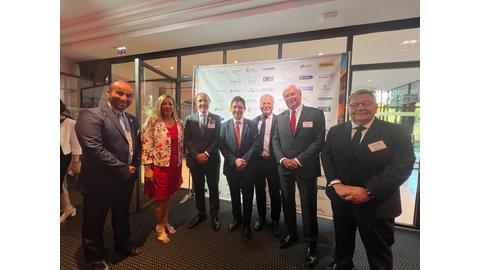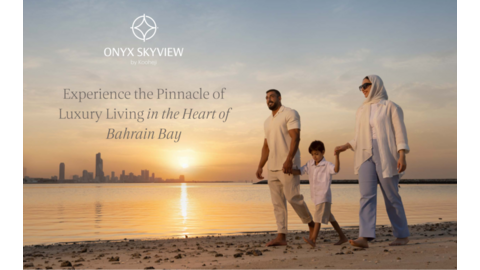GCC growth set to pick up in 2025

Gulf Co-operation Council (GCC) economies are holding firm despite ongoing regional conflict, according to Julius Baer.
While GDP forecasts have been modestly adjusted downward due to uncertainty, growth is expected to pick up in 2025.
“The impact of the conflict is seen as relatively contained,” said Julius Baer Middle East executive director of investment advisory Fahd Abdullah. “The focus remains on diversifying away from oil, with non-oil sectors like tourism contributing significantly.”
The Julius Baer Global Wealth and Lifestyle Report 2024 paints a picture of a world settling into a “new normal” after the pandemic, with inflation, geopolitical tensions, and rising living costs shaping consumer habits.
The report highlights the importance of non-oil sectors in the GCC. Abu Dhabi’s non-oil economy, for example, grew by 9.1 per cent in 2023, surpassing half of the emirate’s total GDP. Dubai’s tourism sector has seen a strong rebound post-pandemic, with a projected 11pc year-on-year increase and more than 20 million visitors expected in 2024. Tourism now contributes roughly 12pc to Dubai’s GDP.
The UAE’s transport and storage sector is another key driver of non-oil growth. Overall, the report suggests GCC countries are likely to maintain fiscal and current account surpluses in the near term. Inflationary pressures, though elevated compared to previous years, remain subdued relative to other emerging markets.
Globally, price increases have moderated to an average of 4pc this year (US dollar terms), compared to 6pc in 2023. Goods continue to see a steeper rise than services, with a 5pc average increase. While cities remain on an upward cost trajectory, inflation rates have shown signs of normalisation over the past year.
The report’s city ranking is based on the Julius Baer Lifestyle Index, which tracks the cost of a basket of goods and services associated with a high standard of living in 25 major cities.
Dubai’s ascent continues, claiming the 12th spot in the report and holding the title of the 6th most expensive city in the Europe, Middle East and Africa (EMEA) region. The emirate’s longstanding reputation as a premier economic hub and a symbol of opulence in the Middle East continues to draw affluent residents.
Luxury goods, particularly clothing, watches and most notably, real estate, dominated spending patterns among Middle Eastern high-net-worth individuals (HNWIs). This stands in contrast to Europe and Asia-Pacific (APAC) regions, where hospitality and fine dining take centre stage. The Americas show a more balanced spending pattern across categories.
Travel spending also saw an uptick across all regions, with the Middle East and APAC leading the growth. Notably, business and leisure travel in the Middle East surged by 65pc and 67pc, respectively.
Despite recent market volatility, HNWIs remain open to taking calculated risks for higher returns. Investors in APAC, the Middle East, and Latin America, buoyed by financial expertise and rising asset values, have increased their risk tolerance. Europe and North America, however, continue to exhibit a more conservative approach.
Unsurprisingly, wealth creation and asset growth remain the primary financial goals for HNWIs globally. Investment activity rose across all regions compared to the previous year, with the Middle East leading the charge. A staggering 72pc of Middle Eastern HNWIs increased their investments, followed by 68pc in APAC. This trend mirrors the regional risk tolerance levels.
The report echoes last year’s findings on the growing importance of health for HNWIs. Healthcare spending is a top-five priority across all regions for planned investments in the next year. Investors in the Asia-Pacific region are showing the strongest focus on healthcare investments.
While personal enjoyment remains a key motivator, sustainability is playing a more prominent role in investment decisions for HNWIs in APAC, the Middle East, and Latin America. A significant portion of HNWIs in these regions have reviewed their portfolios to understand the environmental, social, and governance (ESG) impact of their investments, demonstrating a stronger ESG orientation compared to Europe and North America.
However, this focus on sustainability has yet to translate into consumer spending habits. While HNWIs prioritise health, aesthetics, and acquiring cutting-edge technology, actual purchasing decisions still show limited emphasis on sustainability.
The report concludes that although HNWIs enjoy a luxurious lifestyle, they are also increasingly seeking self-improvement through health, wellness and technology. Real estate remains a key long-term investment, particularly for Middle Eastern HNWIs. The challenge lies in encouraging HNWIs to fully integrate sustainability into both their investment strategies and everyday lives across all markets.
Source: https://www.gdnonline.com/Details/1316251/GCC-growth-set-to-pick-up-in-2025


